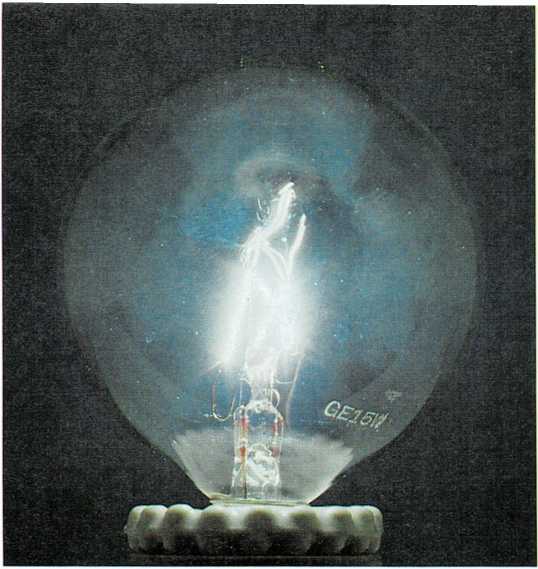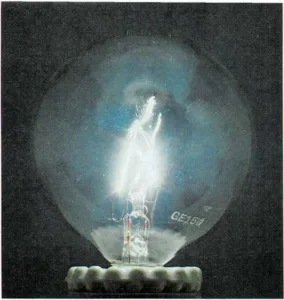Electricity traveling through the thin wire of a light bulb makes the
bulb glow.

It’s light!
When you turn on a lamp, electricity makes the bulb light up. But the
whole bulb isn’t really glowing. The part that gives light is a tiny
wire inside the bulb.
The electricity you are using follows a path through a wire into the
lamp. When the electricity reaches the bulb, it pushes in through the
metal piece on the bottom. It travels around a wire path inside the
bulb. Then it leaves the bulb again.
Part of the path through the bulb is a special filament
[(fihl]{.smallcaps} uh muhnt)—a very thin thread of coiled wire.
Because the filament is very thin, the electrons traveling around the
path can’t pass through it easily. They push hard to get through the
thin wire.
The push of the electrons makes the

When the wire in the bulb breaks, the electricity stops flowing. The
bulb is “burned out.”
molecules in the filament move faster and faster. The molecules get
hotter and hotter as they speed up—so hot that the electrons in the
molecules give off energy. The filament glows!
The filament in the light bulb is made of a special metal called
tungsten [(tuhng]{.smallcaps} stuhn). A tungsten wire can get very hot
without burning or melting. But tungsten evaporates very slowly as it is
heated—its molecules change to a gas and leave the wire. So, as the
light bulb glows, the filament gets thinner and thinner.
After many hours of use, the filament breaks. The bulb is \”burnt out.”
The electricity can’t get across the break in the filament. Then you put
in a new bulb. Now the electric current has a path to follow. The lamp
lights up again.

